Lizards
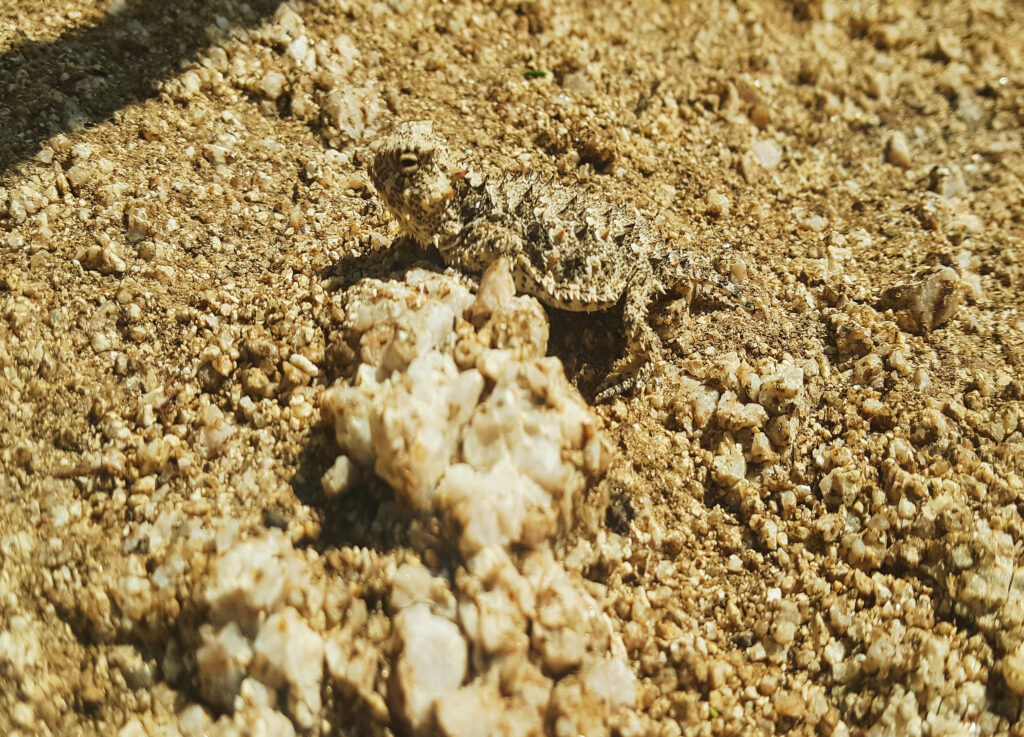
Pygmy Short-horned lizard
The pygmy short-horned lizard (Phrynosoma douglassi) was once found in the Okanagan Valley of British Columbia. Globally, the species is believed that the to be relatively stable but it not been found in Canada since 1957. The diet of both young and adults is largely comprised of ants.
Potential Ex Situ Role(s): Reintroduction
Snakes

Butler’s Gartersnake
The butler’s gartersnake (Thamnophis butleri) looks very similar to the common gartersnake (Thamnophis sirtalis) and can be hard to distinguished. The species is only found in in the lower Great Lakes region. In Ontario, both the species and its native tallgrass prairie habitat are extremely rare.
Potential Ex Situ Role(s): Reinforcement
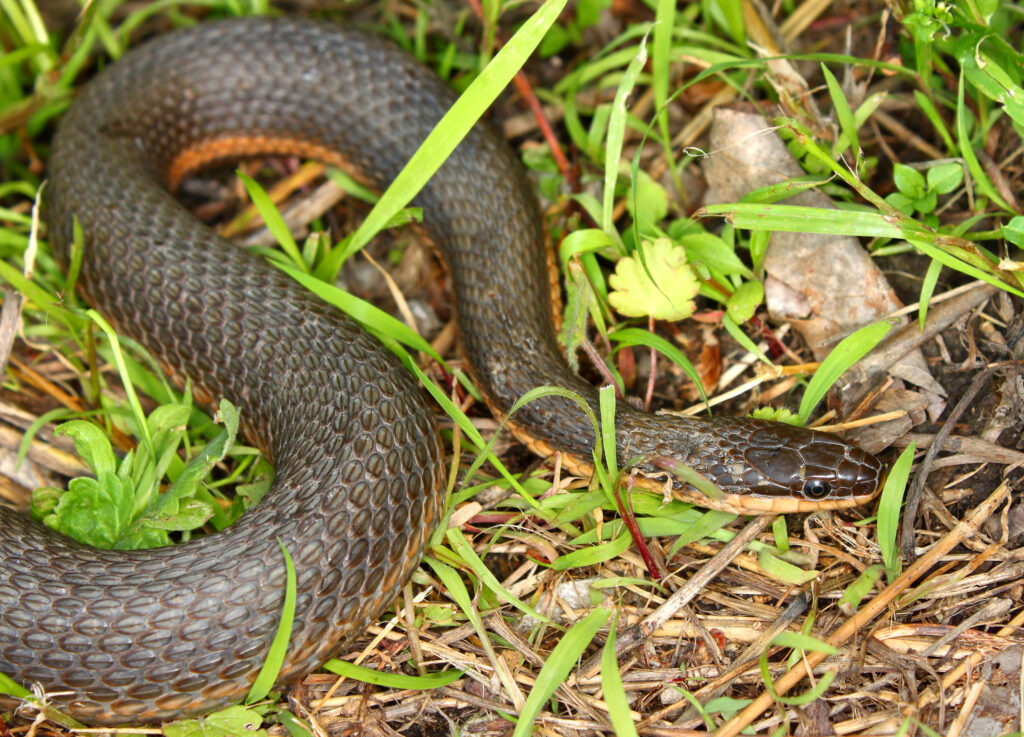
Queensnake
The queensnake (Regina septemvittata) has an extremely specialized diet of freshly molted juvenile crayfish. The species is relatively widespread in eastern North America, but is restricted to southwestern Ontario. Declines are made worse where where habitat alteration and water pollution have negatively affected crayfish populations.
Potential Ex Situ Role(s): Reinforcement, Reintroduction

Timber Rattlesnake
The timber rattlesnake (Crotalus horridus) is a large venomous rattlesnake that is no longer found anywhere in Canada, with the last sighting in the Niagara Gorge, Ontario in 1941. While sizeable population do still occur in some area, the species has suffered widespread declines due to human persecution, as well as habitat loss and fragmentation.
Potential Ex Situ Role(s): Reintroduction

Pacific Gophersnake
The Pacific gophersnake (Pituophis catenifer catenifer) is a subspecies of gophersnake with a historic range limited to southern British Columbia and Washington state. The species is now considered as ‘extirpated’ in Canada, where it has not been observed for more than 50 years.
Potential Ex Situ Role(s): Reintroduction
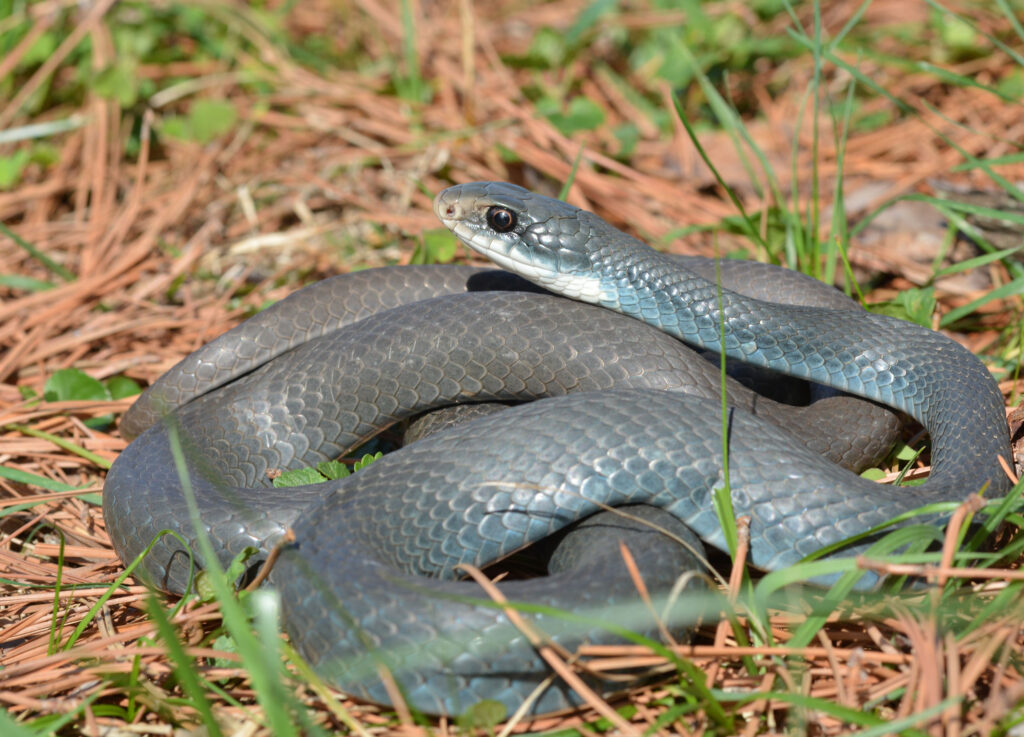
Blue Racer
The blue racer (Coluber constrictor foxii) is Canada’s longest, fastest, and one of its rarest snakes, now being found only on Pelee Island in Ontario. In the United States, this distinct subspecies of racer is limited to an area south of the Great Lakes from Iowa east to Ohio.
Potential Ex Situ Role(s): Reintroduction
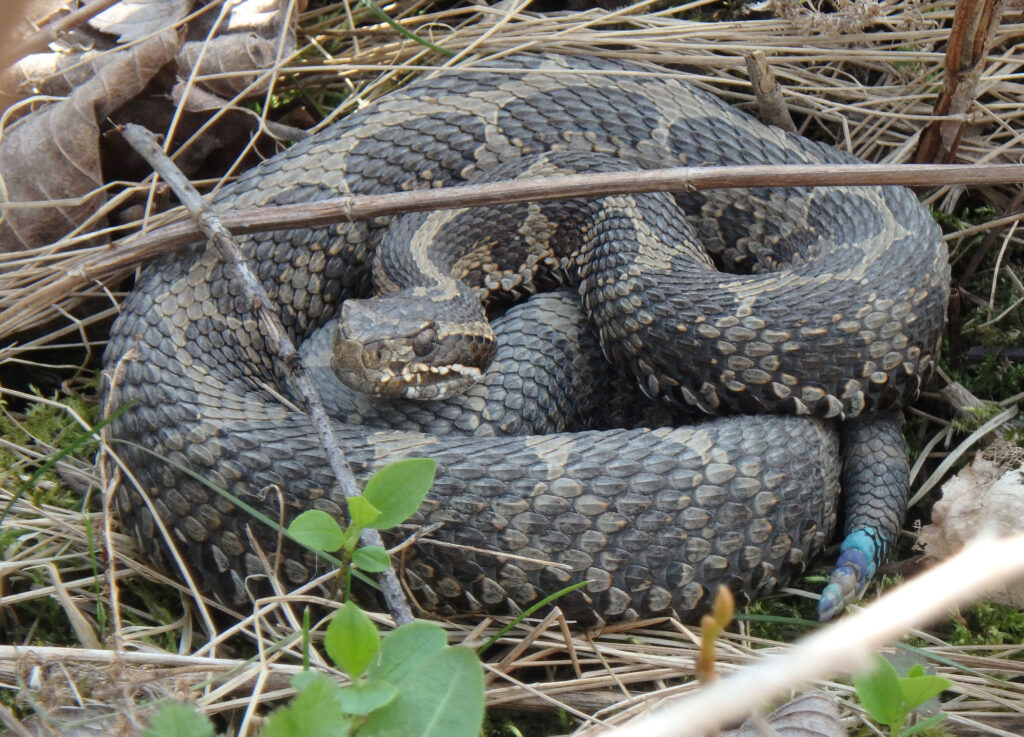
Massasauga Rattlesnake
The Massasauga (Sistrurus catenatus) is Ontario’s only remaining venomous snake. While it has faced widespread persecution for this fact, it in fact poses little threat to humans. The historical range of the species in Canada lies entirely within Ontario. Currently, only two, disjunct populations remain. Photo: Eric Jolin
Potential Ex Situ Role(s): The Massasauga Rattlesnake Species Survival Plan is a collaborative science-based program coordinated across a number of zoo institutions and serving several ex situ roles. Training (underway), Education (underway), Reinforcement, Demographic Manipulation, Reintroduction, Insurance Population (established)
Turtles

Blanding’s Turtle
The Blanding’s turtle (Emydoidea blandingii) is easily distinguished by its bright yellow chin. Blanding’s turtles can live to be 80 years old, and can take up to 20 years before they begin the breed. In Canada, the species is primarily found within the southern portions of Ontario, Québec and Nova Scotia, usually in large wetlands and shallow lakes with an abundance of aquatic plants. Photo: Magee Marsh Wildlife Area, Oak Harbor, Ohio, used under a Creative Commons licence
Potential Ex Situ Role(s): Demographic Manipulation (underway)

Spotted Turtle
The spotted turtle (Clemmys guttata) is a popular species in the pet trade and poaching has led in part to its decline. As with many turtle species, nests are vulnerable to racoons, skunks and foxes. Spotted turtle has disappeared from Quebec altogether, and it is believed that there may be only about 2,000 individuals left in small, isolated populations in Ontario.
Potential Ex Situ Role(s): Demographic Manipulation
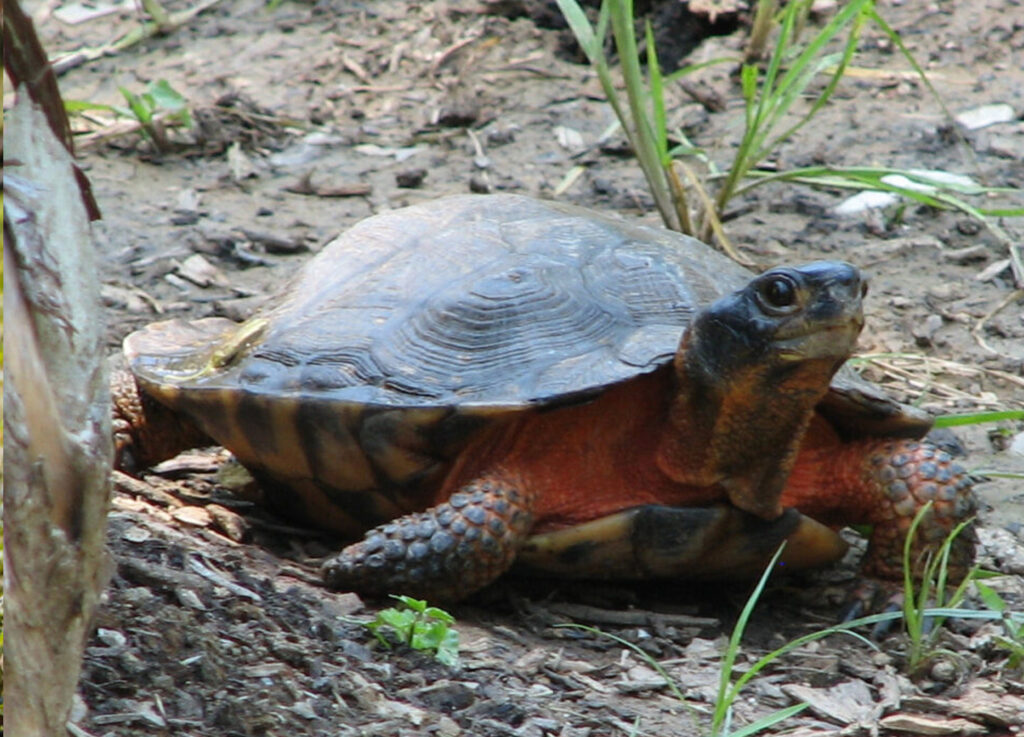
Wood Turtle
Wood turtle (Glyptemys insculpta) is popular as a pet because of its attractive appearance and terrestrial habits. While it occurs in 21 states and provinces, the species is felt to be secure in only 2 states. The late maturity and low juvenile recruitment make the species vulnerable to threats from illegal collection and habitat loss.
Potential Ex Situ Role(s): Demographic Manipulation (underway)
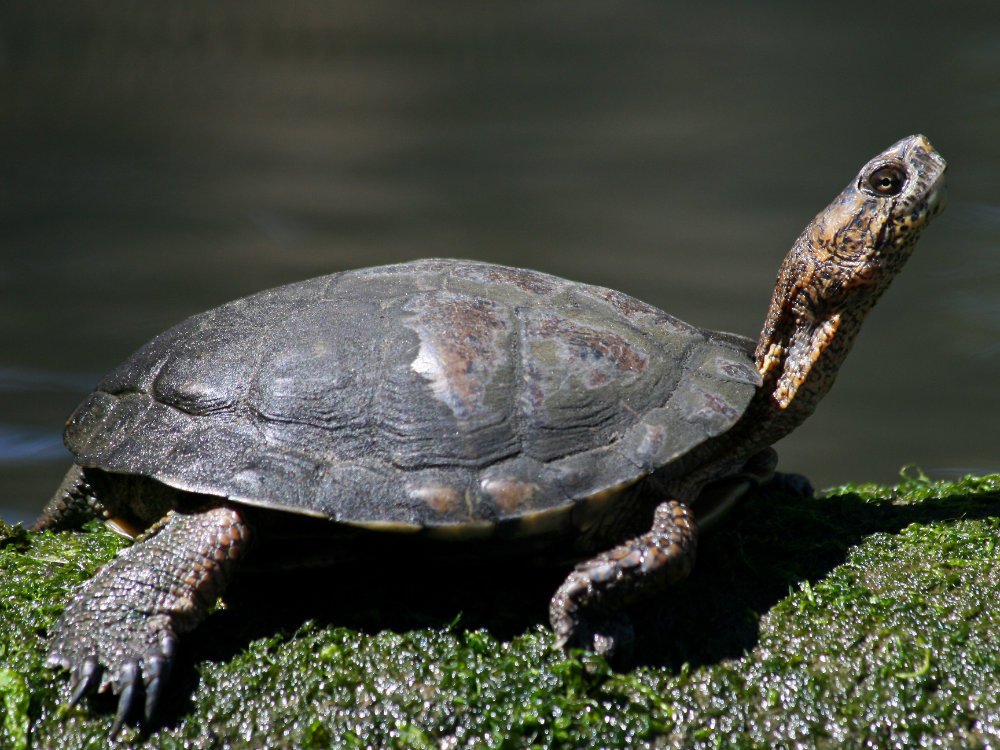
Pacific Pond Turtle
No Pacific pond turtles (Actinemys marmorata) have been found in Canada since 1959, where it was once common in southern British Columbia. Historically, the species was prized for its meat, and the Canadian population was decimated by commercial harvesting. Today, it is threatened throughout its range by habitat loss due to development.
Potential Ex Situ Role(s): Reintroduction

Eastern Musk Turtle
The Eastern musk turtle (Sternotherus odoratus) is also known as the “stinkpot” turtle as individuals can release a musky odour as a defence when handled. The species is highly aquatic, leading it to be vulnerable from boating, fisheries by-catch and loss of shoreline habitat due to development. Photo: Joe Crowley
Potential Ex Situ Role(s): Demographic Manipulation
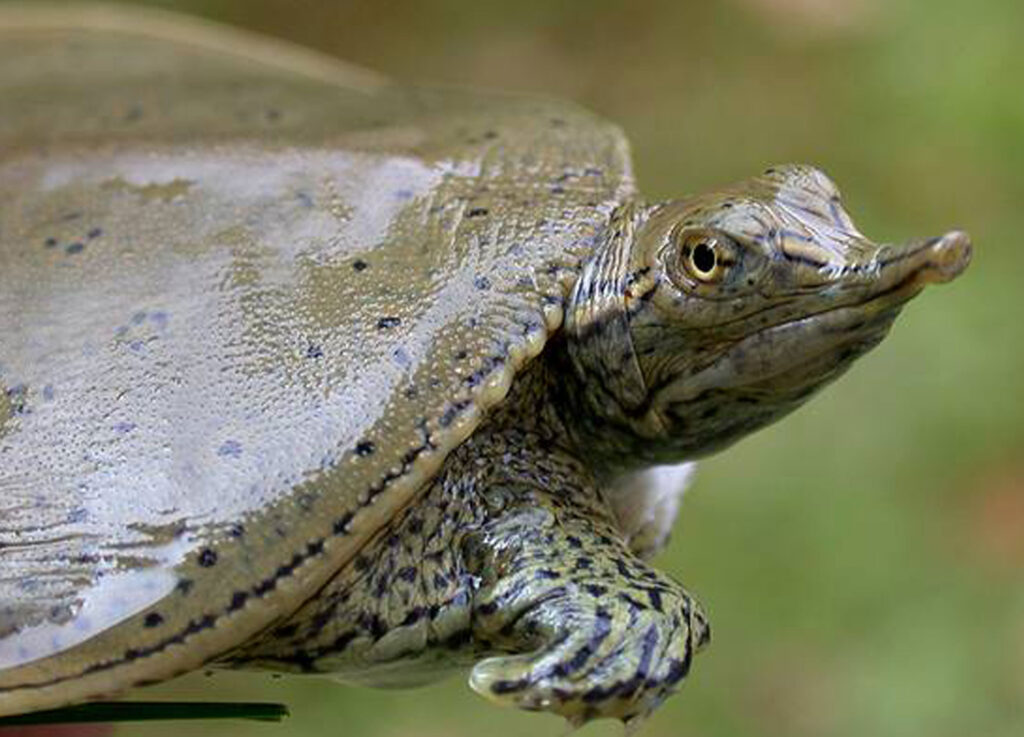
Spiny Softshell
The long snout of the spiny softshell (Apalone spinifera) acts as a snorkel, and, with a flexible shell, makes it distinctive. Unlike many other turtles, the sex of hatchlings is genetically determined rather than varying based on the temperature of eggs during incubation. Once widely distributed in Canada, they are now found only in two areas in Ontario and Quebec.
Potential Ex Situ Role(s): Demographic Manipulation (underway)

Western Painted Turtle
The Western painted turtle (Chrysemys picta bellii) is found only in British Columbia where it is estimated that there are less than 250 adults in the Pacific Coast population. Declines are due to habitat loss , predation by racoons and other human-subsidized predators, road mortality and diseases and parasites carried by introduced red-eared slider turtles.
Potential Ex Situ Role(s): Reinforcement (underway), Demographic Manipulation (underway), Reintroduction (underway), Assisted Colonization
